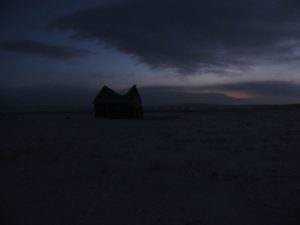
As the pitch black of night gave way grudgingly to the gray of dawn and the first hint of color began to show in the East, we spotted our first coyote of the day. He was hunting his way across the snow covered pasture, looking in every nook and cranny for breakfast. Two feet of snow had fallen over the weekend with 50 mph winds driving it across the flat and through the mountains, making life miserable for man and beast. Now, 3 days later, conditions were ideal to catch coyotes on the prowl.
Throughout the West, late winter/early spring can be a real down time for hunters. Deer and elk seasons have long been over, most mountain lion quotas are filled, waterfowl hunting is just a memory, and spring bear is still a couple months away.
This winter I found coyote hunting to be a great way to fill the void between seasons, sharpen my shooting skills and stay in shape. After dabbling with coyote hunting for years, I decided this would be the year to make a dedicated trip after them and learn as much as I could from a buddy who had been at this for a long time.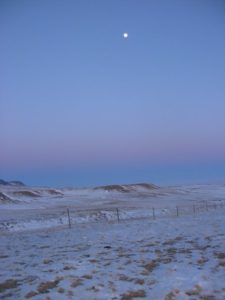
30 years of experience told my friend Chad right where to go for our first set up. We parked the truck out of sight, grabbed our gear, and set up to call from a remote hay stack overlooking an irrigated pasture with shallow coulees running along two sides of it. The slightest hint of breeze made the -10 F temps seem pretty cold right off the bat, as fingers went numb and beards iced up while we were getting set. After a little trial and error, we found the call that really lit up the coyotes and had them on the come. Unfortunately, they came in from behind us, saw the truck and disappeared into the snow filled coulees before we ever laid eyes on them.
The rest of the morning was filled with coyote sightings, missed shots, blown stalks, frozen calls, frost nipped fingers and fun. Lunch time at the ran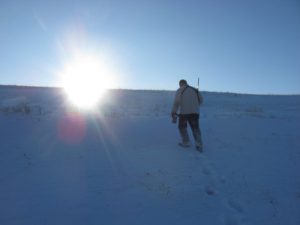 ch house was a good time to regroup, warm up and share a hot meal with solid folks who made me feel right at home and wished us better luck that evening.
ch house was a good time to regroup, warm up and share a hot meal with solid folks who made me feel right at home and wished us better luck that evening.
We started the afternoon with a plan to climb a rocky knob and call into the coulees below, hoping to pull a hungry song dog out of the brush. Plowing up the side of the mountain in knee deep snow got the sweat rolling right away and before I knew it we were belly crawling through the rocks on top.
As I was getting in position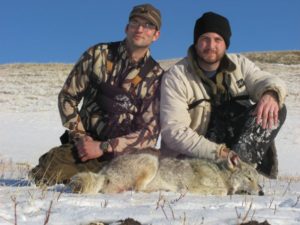 n, Chad hissed “There’s one right out in the open”! Sure enough, a lone coyote patrolled the basin below, just on the edge of shooting range. Despite our best efforts, calling did not interest him in the least and he appeared ready to head for parts unknown. One shot from Chad’s .220 Swift put those plans on permanent hold and our first dog of the day on the ground.
n, Chad hissed “There’s one right out in the open”! Sure enough, a lone coyote patrolled the basin below, just on the edge of shooting range. Despite our best efforts, calling did not interest him in the least and he appeared ready to head for parts unknown. One shot from Chad’s .220 Swift put those plans on permanent hold and our first dog of the day on the ground.
Two hours and a couple unproductive setups later found us hunkered down on the edge of a brush choked coulee ready to give it another go. About 15 minutes into the calling sequence a lone coyote materialized 250 yards out. She was on the hunt and closing fast, with the FoxPro bringing her in on a string. The 150 yard broadside shot was a gimme and grounded my first coyote of the day. The mosaic of black, grays and reds that made up the fur and guard hairs created a beautiful pelt that I was thrilled to have taken.
The last hour of daylight found us calling to 3 different pairs of coyotes and glassing miles of gorgeous country. They’d come our way to investigate the calls but would hang up far out of range as if they knew our plans for their demise. As the last sliver of sun slid behind the ridge, 3 coyotes silhouetted themselves against the glow of an orange skyline creating an unforgettable image that gave me an inkling of what hardcore predator hunters already know…. This could be addicting!
If you Go…A Few basics I learned on the fly that will help streamline your trip
Techniques
Although I’ve heard stories of a myriad of ways to hunt predators the two predominant methods are spot and stalk and calling.
The same spot and stalk techniques you use for deer hunting in the fall can be employed to good effect on coyotes provided you are in an area with a decent concentration of dogs. Lots of glassing from high points or from the truck off ranch roads can be an excellent way to locate coyotes and plan a sneak. Coyotes will generally tolerate the pickup unless you stop within their line of sight, at which point they seem to find another gear and disappear over the horizon.
Calling has long been an effective and popular technique, and when done right is positively deadly.
Mouth calls are manufactured by many reputable companies such as Primos, Knight & Hale, Lohman, and ELK Inc (to name a few) and are designed to produce virtually any sound found in nature to draw in wily predators. These calls have the benefits of being extremely lightweight, inexpensive, effective, relatively easy to learn to use and are legal to use just about everywhere.
The only real drawbacks to mouth calls are that they can be tiring to use for over a prolonged setup and they’re prone to freezing up in cold weather. Nothing is more frustrating than having a reed freeze up when you’ve got an animal coming in. Minimize this problem by keeping your go-to call in a front pants pocket and avoid “spitting it up” until you’ve got the dogs working.
Electronic calls are a whole ‘nother ball game and can eliminate a few significant variables and take away a huge part of the learning curve. We used the FoxPro FX6 on this hunt and once we figured out how to run it (who needs directions anyway!) it worked extremely well. With over 30 different digital sounds programmed in, switching from a mating or challenge call to a prey in distress was a simple as touching a button. All this technology comes with a pretty hefty price tag, although if you’re doing a lot of predator hunting I think it’s worth the investment.
Rifles
This topic could fill an entire article itself, so I’ll just cut to the chase. Dedicated predator calibers like the 220 Swift, .22-250 or a .223 in an AR platform can definitely extend your range and minimize pelt damage. If coyote hunting sounds like your cup of tea, buy one. You’ll love it.
However, don’t feel as though you’re handicapped if you don’t have one of the aforementioned calibers in the rifle rack. I had a great time and shot my coyote with the same .30-06 that goes on long walks with me during deer season. This is a great way to get more familiar with the rifle you’re relying on in the fall and won’t take a bite out of the budget for a different rifle.
Clothes
The old adage of dressing in layers is never truer than in coyote hunting. One minute you’re glassing from the truck, the next you’re sweating your way up the side of a steep coulee, then lying proned out in the snow for 20 minutes calling.
Without a good layering system, misery is all but guaranteed. There’s no need to break the bank here, but make sure you have a warm, windproof outer shell to keep the cold out while on stand and a quality base layer to wick moisture away from your core.
Camouflage is a must and with a zillion patterns to choose from, finding one to fit your hunting area is just a matter of doing a bit of research. The best camo in the world won’t disguise movement though, so make sure you sit tight and don’t get sloppy during calling sequences.

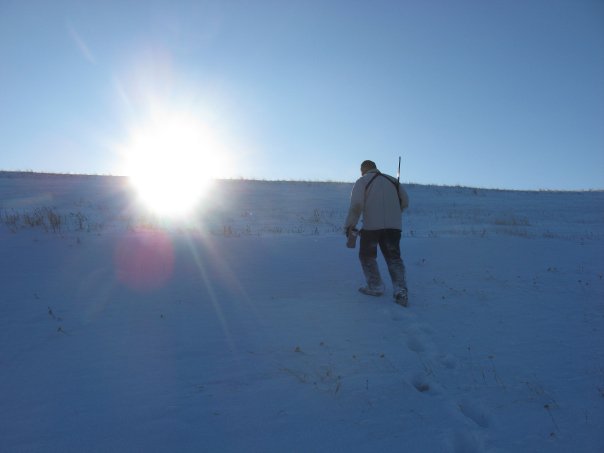
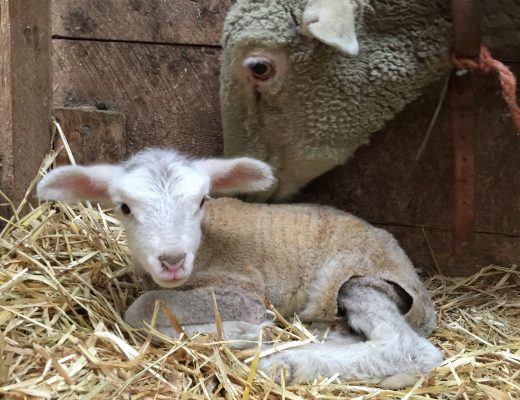
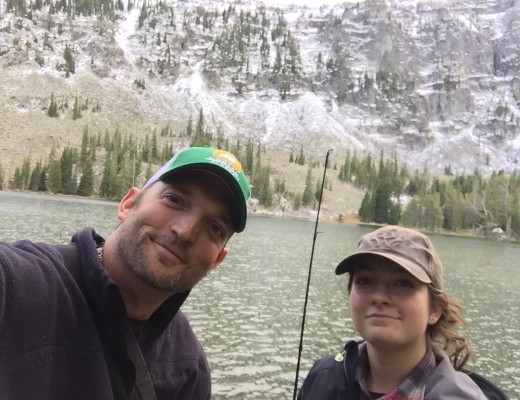

No Comments